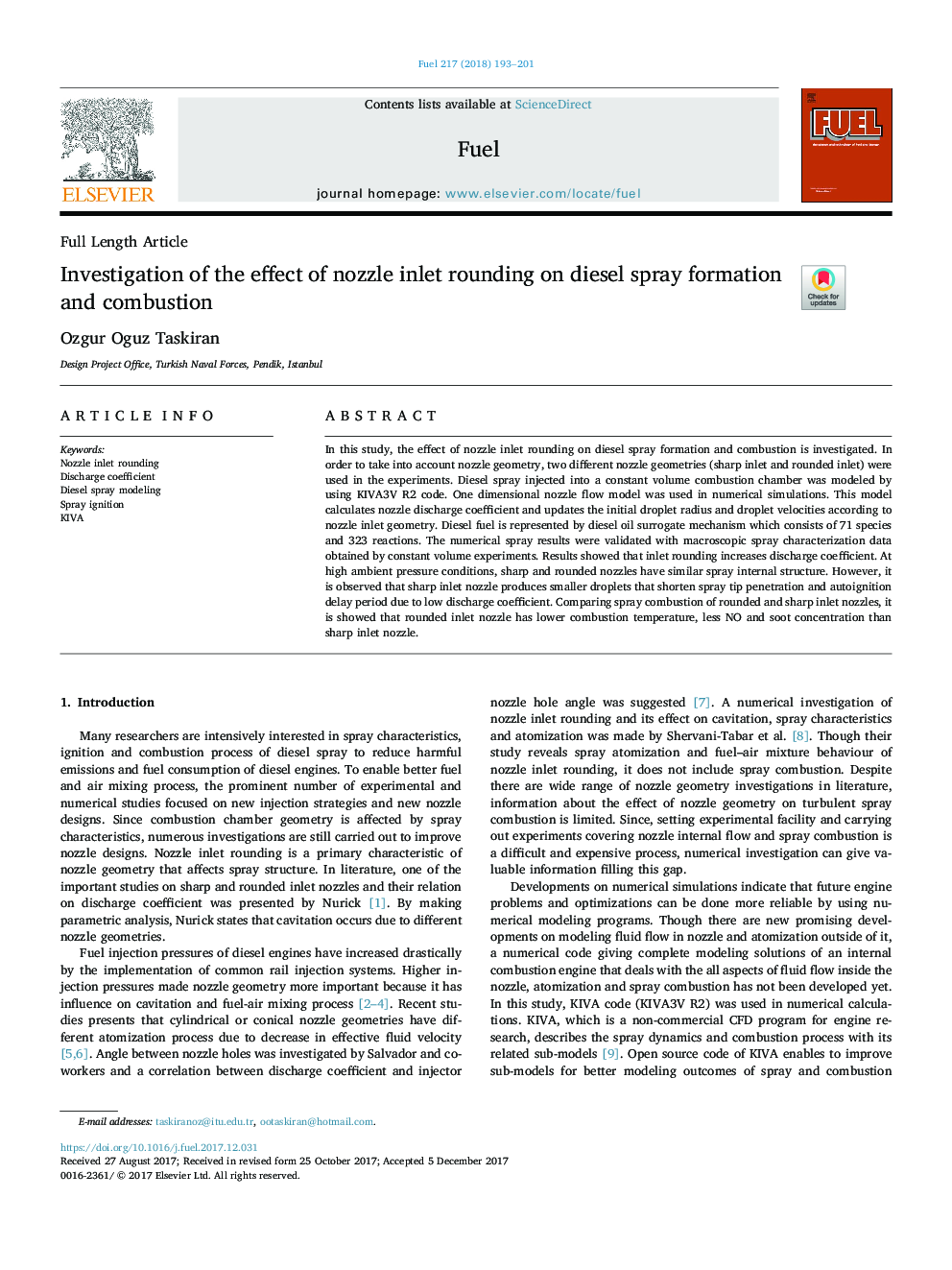| Article ID | Journal | Published Year | Pages | File Type |
|---|---|---|---|---|
| 6632100 | Fuel | 2018 | 9 Pages |
Abstract
In this study, the effect of nozzle inlet rounding on diesel spray formation and combustion is investigated. In order to take into account nozzle geometry, two different nozzle geometries (sharp inlet and rounded inlet) were used in the experiments. Diesel spray injected into a constant volume combustion chamber was modeled by using KIVA3V R2 code. One dimensional nozzle flow model was used in numerical simulations. This model calculates nozzle discharge coefficient and updates the initial droplet radius and droplet velocities according to nozzle inlet geometry. Diesel fuel is represented by diesel oil surrogate mechanism which consists of 71 species and 323 reactions. The numerical spray results were validated with macroscopic spray characterization data obtained by constant volume experiments. Results showed that inlet rounding increases discharge coefficient. At high ambient pressure conditions, sharp and rounded nozzles have similar spray internal structure. However, it is observed that sharp inlet nozzle produces smaller droplets that shorten spray tip penetration and autoignition delay period due to low discharge coefficient. Comparing spray combustion of rounded and sharp inlet nozzles, it is showed that rounded inlet nozzle has lower combustion temperature, less NO and soot concentration than sharp inlet nozzle.
Related Topics
Physical Sciences and Engineering
Chemical Engineering
Chemical Engineering (General)
Authors
Ozgur Oguz Taskiran,
